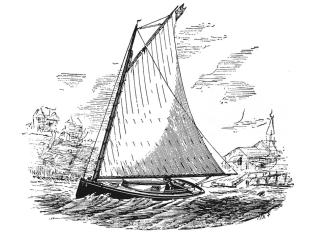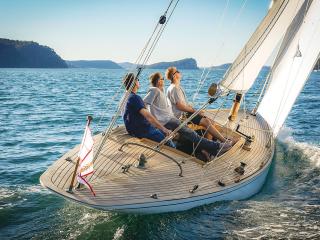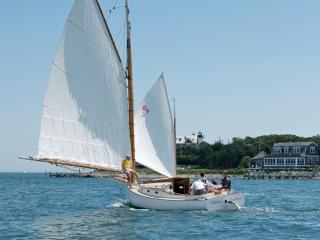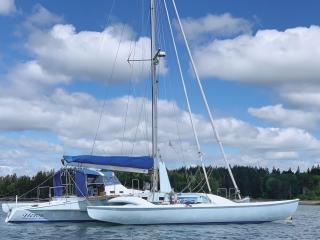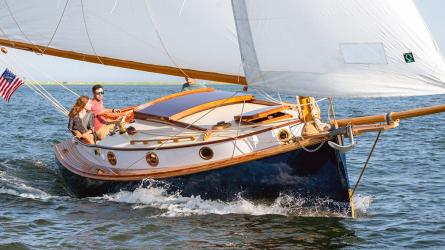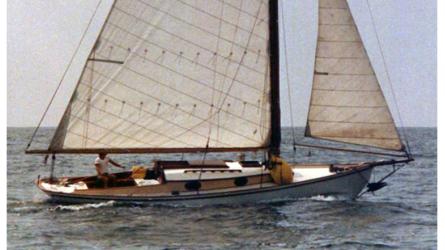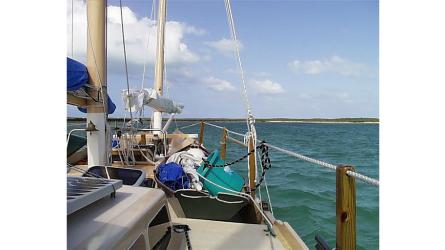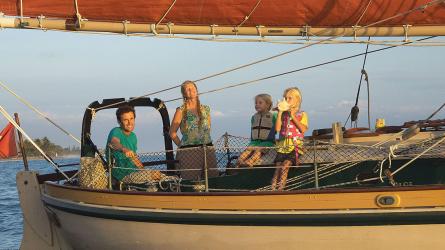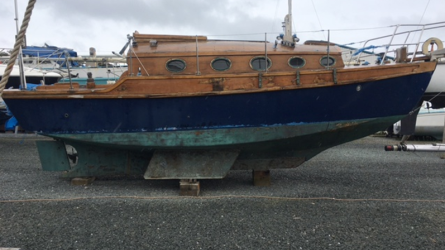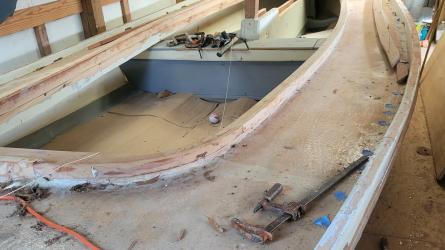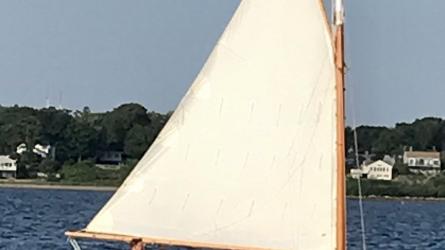July / August 2023
Boatbuilding without Molds
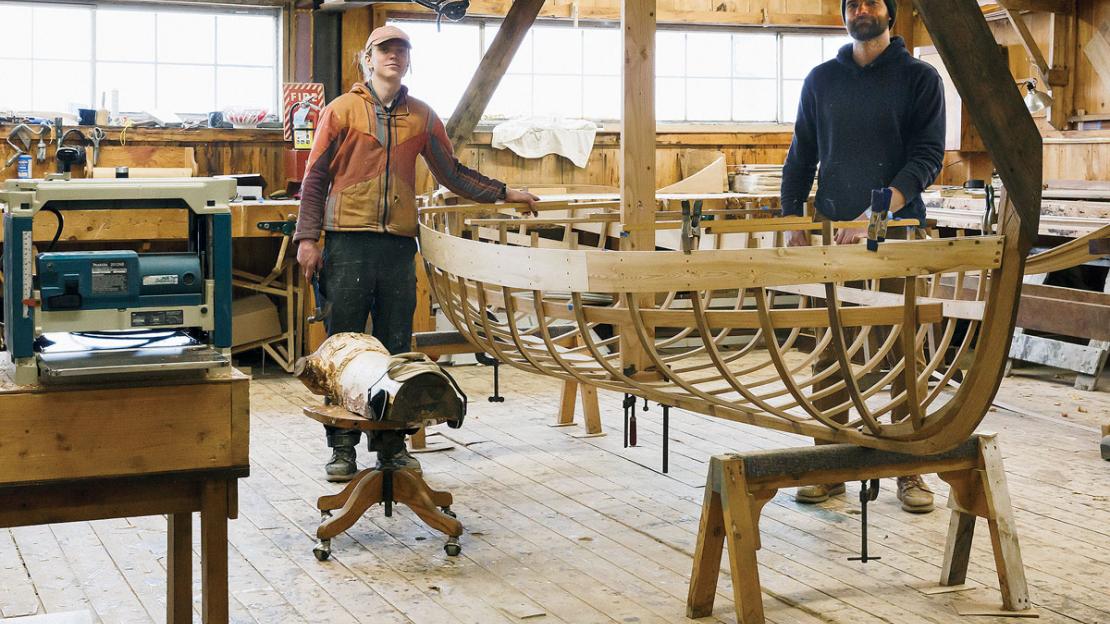
ERIN TOKARZ
Will Swenson (left) and Max Mihelich (right), both in their second year of the boatbuilding program at The Apprenticeshop in Rockland, Maine, took on the construction of a peapod using what was once a common top-down sequence, using pre-bent frames and no sectional molds.
In research, answering one question often poses two new questions. So it was for Ben Fuller, who in WB No. 284 wrote a concise history of Maine peapods, and for his colleague David Cockey, who documented many of these much-loved double-ended pulling boats. Even with their decades of research, the naturally inquisitive pair still had one aspect they wanted to explore further: How, exactly, were these boats built right-side up efficiently and beautifully, without lofting or molds and using the carvel planks themselves as fairing battens?
Written accounts, photographs, and surviving artifacts tell most of the story about an object. But very often, the one question these sources can’t answer is how? What process was used to do a task or build a thing? When that question can’t be answered in any other way, historians turn to experimental archaeology. Starting with the question, “Wouldn’t it be neat…?” Ben and David approached Kevin Carney, the lead instructor at The Apprenticeshop in Rockland, Maine, and then commissioned the construction of a peapod by two second-year apprentices, Will Swenson and Max Mihelich. They would follow clues shown in tantalizing early-20th-century photographs of Alton Whitmore building boats primarily for Penobscot Bay lobstermen.
The apprentices began by joining Ben, David, and others as they examined surviving Whitmore-built boats in the collections at Mystic Seaport Museum in Connecticut and Penobscot Marine Museum in Searsport, Maine. Many of these boats are believed to have been built without molds, often by people who were working as boatbuilders only part-time in certain seasons. Other than a few photographs, we have scant information about this technique.
To read the rest of this article:
Click the button below to log into your Digital Issue Access account.
No digital access? Subscribe or upgrade to a WoodenBoat Digital Subscription and finish reading this article as well as every article we have published for the past 50-years.
ACCESS TO EXPERIENCE
2-for-1 Print & Digital Subscription Offer
For this holiday season, WoodenBoat is offering our best buy one, get one deal ever. Subscribe with a print & digital subscription for $42.95, and we’ll give you a FREE GIFT SUBSCRIPTION to share with someone special.
1 YEAR SUBSCRIPTION (6 ISSUES)
PLUS ACCESS TO MORE THAN 300 DIGITAL BACK ISSUES
PRINT+DIGITAL $42.95
Subscribe
To read articles from previous issues, you can purchase the issue at The WoodenBoat Store link below.
 Purchase this issue from
Purchase this issue from
